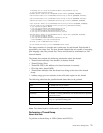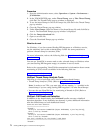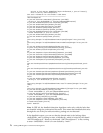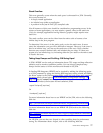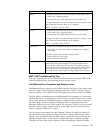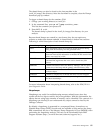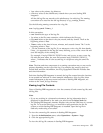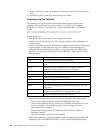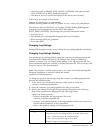
Parameter Description
-Xmns
v Controls the initial size of the new area to the specified value
when using -Xgcpolicy:gencon.
v Corresponds to the JVM short-lived memory (min) value
It is recommended to use the following formula to compute –Xmns
value when the minimum heap size is modified.
-Xmns = (0.33333 * value of -Xms)
-Xmnx
v Controls the maximum size of the new area to the specified
value when using -Xgcpolicy:gencon
v Corresponds to the JVM short-lived memory (max) value
It is recommended to use the following formula to compute –Xmnx
value when the maximum heap size is modified.
-Xmnx = (0.33333 * value of -Xmx)
-Xjit:count
v Controls the compilation threshold of the JIT compiler
v Value given to count causes the Java method to be compiled
after n runs
For 64-bit noapp JVM and 64-bit container JVM:
v Default Value for Linux: 1000
v Default Value For AIX: 1000
-Xgcpolicy:gencon Controls the behavior of the Garbage Collector. They make
trade-offs between the throughput of the application and the
overall system, and the pause times that are caused by garbage
collection. By specifying the gencon value, the GC policy requests
the combined use of concurrent and generational GC to help
minimize the time that is spent in any garbage collection pause.
IBM
®
JVM Troubleshooting Tips
This topic describes the various issues that may arise when using the IBM
®
JVM
and the troubleshooting tip pertaining to each of these errors.
OutOfMemoryError Exceptions and Memory Leaks
OutOfMemoryError exceptions occur when either the Java heap or the native heap
run out of space. These exceptions indicate that there is either a memory leak or
that the number of live objects in the JVM require more memory than is available.
The first step to troubleshooting an OutOfMemoryError exception is to determine
whether the error is caused because of lack of space in either the Java heap or the
native heap. When the OutOfMemoryError is caused because of lack of space in
the native heap, an error message is displayed with an explanation about the
allocation failure. If an error is not present, the exception is likely to have occurred
because of lack of space in the Java heap. In the latter scenario monitor the Java
heap by using the Verbose GC output.
The Java heap is consumed when the Garbage Collector is unable to compact or
free the objects being referenced. Objects that are no longer referenced by other
objects, or are referenced from the thread stacks, can be freed by performing the
garbage collection task. As the number of referenced objects increases, garbage
collection will take place more frequently. With each garbage collection instance,
Performance Management 79



